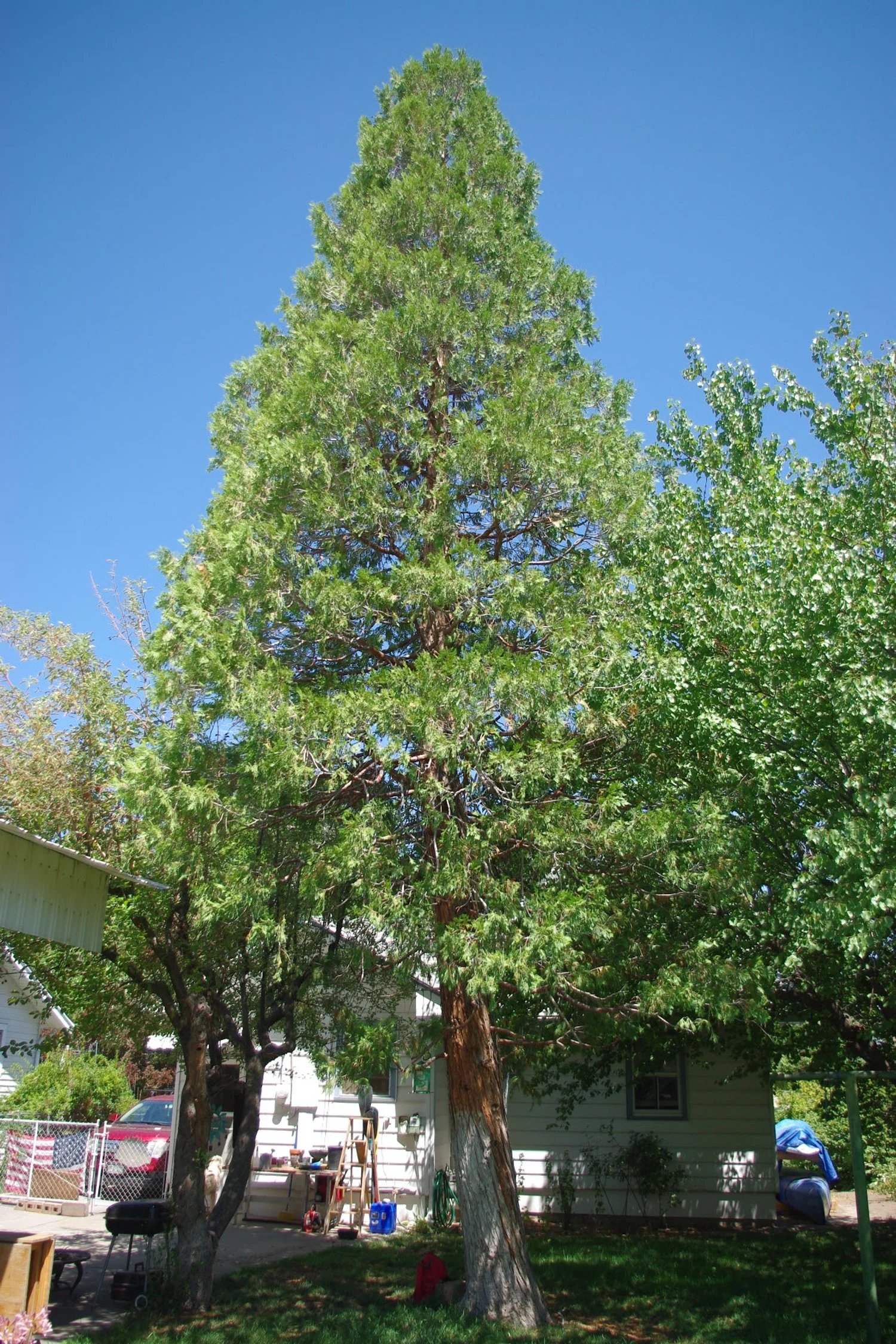incense cedar (Calocedrus decurrens)
Third place champion incense cedar in Grand Junction.
Species info:
Leaves: Bright green, scale-like foliage arranged in distinct flattened sprays. Overall foliage has a “fan-shaped” appearance.
Leaflets: Overlapping, opposite, scale-type leaflets that together form the characteristic “fluted wine-glass” pattern unique to this species.
Leaf Surface: Smooth, bright green, aromatic when crushed; tight and glossy on the branchlets.
Bark: Multi-colored gray bark with reddish-brown streaks; flaky on young trees. Becomes deeply furrowed and thick with age.
Flowers: Male flowers pale greenish-yellow, abundant at branch tips in late winter to early spring.
Fruit: Female cones up to 1" long; cylindrical when young but mature into a woody cone that opens into a shape resembling a bird’s beak.
Botanical: Calocedrus decurrens
Family: Cupressaceae
Mature Height: 40–50 feet in Colorado landscapes (taller in native range)
Canopy Spread: 15–20 feet; maintains a narrow, pyramidal form
Foliage Type: Evergreen
Tree Shape: Strongly pyramidal when young; remains narrow and columnar with age
Growth Rate: Moderate
Fall/Winter Interest: Evergreen; bark offers winter color and texture
Water Use: Low to moderate; tolerates dry summers once established
Hardiness: Zones 5–8
Soil Preference: Adaptable to clay and alkaline soils; prefers well-drained sites
Sun Exposure: Full sun
Wildlife Value: Seeds consumed by birds; dense cover provides nesting and shelter
Pests/Pathogens: No significant pest or disease issues observed in Colorado
Planting Recommendations: Due to lack of cold-hardiness, this species is not recommended for most sites in Colorado
Information Sources:
Michael A. Dirrs. Dirr’s Encyclopedia of Trees and Shrubs. Timber Press. 2011.
Michael Dirr, Manual of Woody Landscape Plants (University of Georgia, 1990)
Silvics of North America -- Volume 1 Conifers, Agriculture Handbook 654


